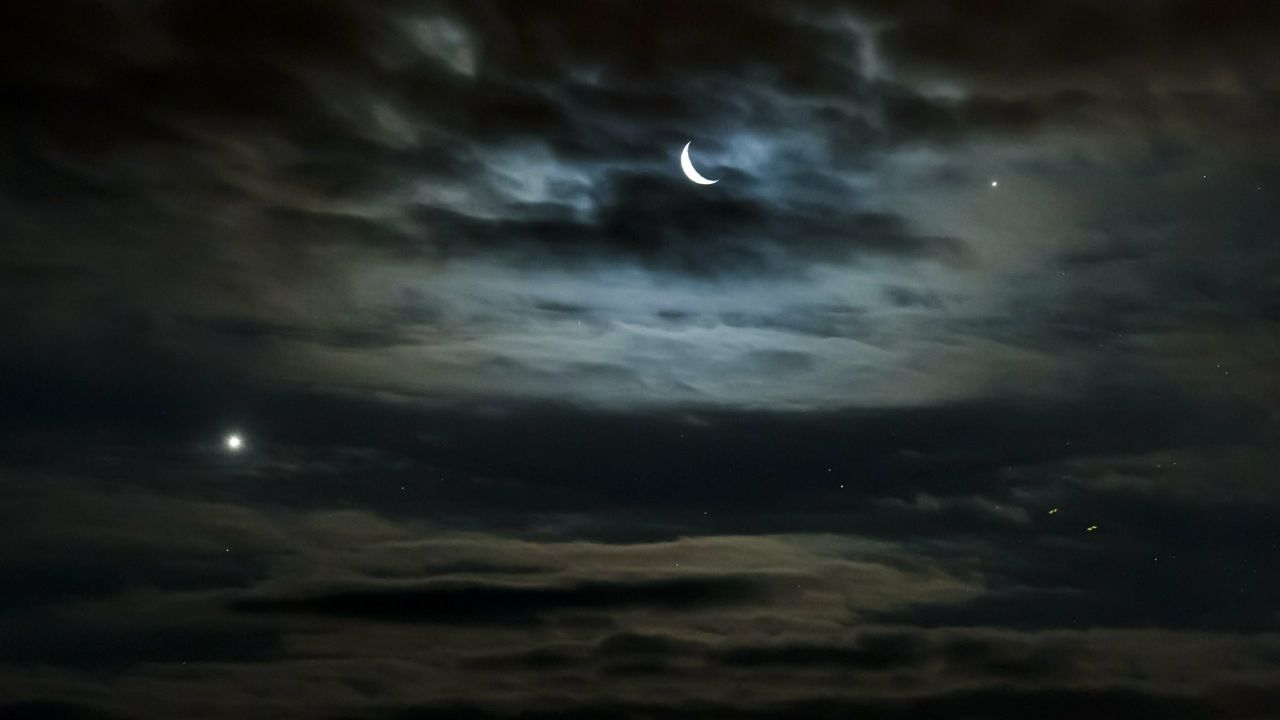LOS ANGELES — The highlight of this month is the double “conjunction” on the last weekend of September. On Friday September 25, the Moon will be very close to the bright planet Jupiter.
Then on Saturday 26, the Moon will appear to be next to Saturn. It is interesting to see how far the moon moves in just one night! Look south after dark which will be about 8:00 p.m.
If you have binoculars or a small telescope, take a look at Jupiter and Saturn. It is fun to see the four major moons of Jupiter: Io, Europa, Ganymede and Callisto. Jupiter at last count has 79 moons. Saturn has 82 moons.
Look for its biggest moon, Titan, which is bigger than the planet Mercury!
If you are up after 11 p.m., look east and watch the red planet Mars rise to the zenith of the night sky. Three space ships are traveling right now to Mars.
The Chinese and the UAE (United Arab Emirates) space vehicles are on their way, as is our new Rover, “Perseverance,” which is scheduled to land on February 18, 2021. Then the Rover will launch the first drone on the planet Mars. It will be tested by the tough conditions of a very thin atmosphere which could make it crash.
Meanwhile, here on Earth, watch each night as Mars grows bigger and brighter and wider as October 13 nears. This is the night that Mars and Earth are at their closest point.
Fun Fact: Earth takes one year to go around the Sun, while Mars takes two years. Thus, once every two years we get very close to each other.
By the way, the planet Neptune takes almost 165 years to go around the Sun!
Speaking of Neptune, try to see the blue planet on September 17th when it will be at its brightest. Binoculars are a must in order to spot this blue dot. Look in the constellation Aquarius to spot Neptune.
The planet Mercury which is a little bigger than our Moon, is easy to spot at the end of September. Look low in the west 25 minutes after the Sun sets at about 7:50 p.m.
Dawn Patrol: If you are up at 5:00 a.m. go out and look due east to see the dazzling planet Venus. Also to the east you will see the famous Orion constellation rising. Overhead is the red planet Mars getting brighter and wider each dawn.
Every night in September look straight up after dark to see the famous “Northern Cross” and the giant “Summer Triangle.”
If you get away from city lights, notice how the great arch of the Milky Way runs through both of these star patterns. To the southwest watch the famous constellation Scorpius as it sets before 10:00 p.m.
Also, the “Big Dipper” is very low in the north, but the “Little Dipper” is at its highest point to the north.
Try to find the North Star.
The North Star is not the brightest star and is located at the end of the Little Dipper’s handle. Remember, it is the only star that does not move and always signals true north.
Follow NIGHTTREK on Facebook where up to date information is available on rocket launches and the ISS sighting times and dates
To get more news and information from this partner, subscribe here.




